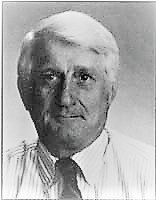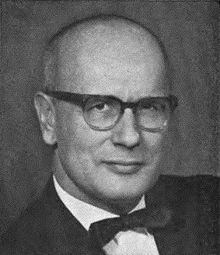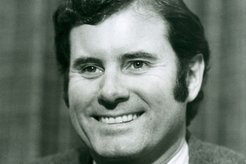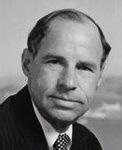Review — The Peace Corps Experience, 1969-1976 by P. David Searles (staff)
 The Peace Corps Experience: Challenge and Change, 1969-1976
The Peace Corps Experience: Challenge and Change, 1969-1976
By P. David Searles (Philippines Country Director 1971-74; Peace Corps Deputy Director 1974-76)
The University Press of Kentucky
March 1997
254 pages
$21.96 (hard cover)
Reviewed by David Elliott (Poland 1991-93; Staff-India 1966-68, Nigeria 1965-66, Sierra Leone 1964-65)
•
Was the Peace Corps on its deathbed in 1969? Did Director Joe Blatchford revive the patient with his “New Directions” medicine? In his preface, P. Searles is explicit as to his book’s “main message”:
In late 1969, President Richard Nixon’s first Peace Corps director, Joseph H. Blatchford, announced a set of policies, which he labeled New Directions, that changed its [Peace Corps’] nature and ensured its survival…Without these changes its tenth anniversary (in 1971) would have been a wake mourning the death of the last of the Kennedy era.
Peace Corps history buffs may find this book entertaining, even provocative. Searles was Peace Corps Country Director in the Philippines (1971-74), and was then in Washington as Regional Director (NANEAP 1974-75) and Deputy Director (1975-76). His book is part personal memoir of his five-year tour and part his perspective on changes in the Peace Corps during that time. More than half the book relates to the Peace Corps program in the Philippines, with two fine, insightful chapters of Peace Corps life there. He also recaps the history of America’s long involvement in the Philippines.

David Searles
Searles’ personal story is candid and appealing—his career change to high school teaching after eleven years with Procter & Gamble, his recruitment to Peace Corps, his family’s move to Manila and their early days there. A chapter about his time in Peace Corps/Washington is mostly engaging as he relates the story of ACTION’s early years. In his first chapter he covers the basics of Peace Corps’ early history. The two final chapters, one about the Peace Corps in 1990’s and the last one about the Peace Corps legacy, are thoughtful and, like the rest of the book, well written.
Unfortunately, what could be a credible, informative book is undercut by Searles’ insistence on hyping the accomplishments of Blatchford’s “New Directors.” He threads this thesis throughout most of the book. He wants his readers to believe that, thanks to “New Directions,” the early 1970’s were for the Peace Corps the years of a magnificent turnaround and not “the dad years” as some refer to them.
Searles’ goal is to tell what he calls, “the other side of the story.” In doing so he goes overboard. According to Searles, “New Directions” not only saved the Peace Corps from death but also “echoed a dramatic departure from the past in the same way that the New Deal and the New Frontier did….New Directions was one of the most important innovations in the organization’s history.”
What were these vaunted “New Directions”? Searles describes them as “five broad yet simple ideas.”
- “Volunteer jobs needed to be more immediately beneficial to host countries and in line with those countries’ own development needs.”
- “Volunteers needed to possess the required skills to do the job, acquired either through previous experience or through training provided by the Peace Corps.” (This goal included recruiting more older Volunteers and more training in the host countries instead of in the U.S.)
- “An explicit recognition that host countries were equal partners n the work.”
- “An explicit recognition that host countries were eual partners in the work.”
- “Greater use of Volunteers upon their return hom to address the nation’s internal needs.”
When the “New Directions” were announced in 1969 they seemed to many in Peace Corps “like old directions revisited,” as Brent Ashabranner wrote in A Moment in History. They certainly weren’t new ideas. All of them were on track in Peace Corps by the late 1960’s. It is fair to say, however, that Blatchford established these “directions” as his policy priorities and achieved significant results.
Yes Searles never really proves that. Late in the book he even concedes that “possibly this transition would have occurred in the natural course of events as the organization matured.” Searles does describe positive changes in the Philippines program which he attributes to “New Directors.” That is hardly convincing since Searles was the one running the program there. He goes on to claim that these changes were “typical and serve well as a proxy for the Peace Corps as a whole.” That conclusion is dubious to anyone who knows of the vast diversity of Peace Corps’ host countries and programs.
Both Karen Schwartz in What You Can Do For Your Country and Gerald t. Rice’s essay, Twenty Years of the Peace Corps, do credit Blatchford with achieving change. Both seem more credible than Searles’ account. Rice even repots quantitative results: “In 1966-67, nearly 60% of all Volunteers were generalists; five years later, 55% had some kind of specialized skill.” (Rice described “new directions” without capital letters.)
In several places Searles repeats a mantra that with “New Directions” came the necessity for Volunteers “to do something as well as be somewhere—suggesting that this was a novel idea for Peace Corps and a turnaround in policy direction. In this strenuous effort to rewrite Peace Corps history, Searles makes strange declarations such as:
“Dellenback’s arrival (1975) as Peace Corps director marked the end of the conscious use of the phrase New Directions. By then the objectives of the initiative had been accomplished. The New Directions philosophy had been accomplished. The New Directions philosophy had been absorbed into the organization. No longer were volunteer jobs to be left to chance. No longer were volunteers put in the field simply so that they could be someplace. The need for volunteers to do something had become in integral part of the Peace Corps formula.”

John D. Dellenback
It will certainly be news to Sarge Shriver and Jack Vaughn — and anyone who served with them in the Peace Corps — that until Blatchford came along Volunteers job were “left to chance” and Volunteers were put in the field “simply so that they could be someplace.”
Never did Peace Corps intend that Volunteers just be someplace and not do something. Sure, sometimes Volunteers jobs can turn out to be phony, unrealistic, unneeded, elusive, ambiguous, amorphous, window dressing, political, too unstructured, or just plain nonexistent. Often this results from the volatility of the job settings and the time gap between job requests and Volunteer placements. But, never is it intended.
Blatchford became the first head of ACTION in mid-1971, after serving two years as Peace Corps Director. ACTION was comprised of Peace Corps, VISTA, (domestic volunteers) and four other small volunteer agencies. Peace Corps remained under the umbrella of ACTION until 1981. There are some who argue convincingly that it was ACTION, not the late 1960s, that almost killed Peace Corps. Even Searles acknowledges that “it is clear the creation of ACTIN was a disaster.” That Blatchford was ACTION’s first head didn’t endear him to Peace Corps staff, nor does it enhance Searles’ portrayal of Blatchford as Peace Corps’ savior. Searles doesn’t explore the ACTION aspect of Blatchford’s career beyond this summary appraisal:
Certainly his pivotal role in making New Directions an essential part of the Peace Corps and his victory in the 1972 budget battle warrant the gratitude of today’s 150,000 Peace Corps alumni. One cannot say as much for his role in the creation of ACTION, but in the context of Washington and its often unfathomable ways, being right on two out of three major issues—as someone once declared—ain’t all bad.
What leads Searles to boost of the Blatchford era and disparage the Peace Corps of the late 1960’s? Perhaps it was simply to create controversy and thereby more interest in his book. Perhaps he wanted to repaint the image of his own term of service. Perhaps the reason lies partly in his statement that “those of us who came to the Peace Corps in later years were never truly accepted by that original bank of men—and a few women—who were there at the creation….One could sense that they begrudged our claims to membership of an equal standing.”

Joe Blatchford
The book ends with interesting chapter notes and a helpful bibliography. It is intriguing that in the notes there is no reference to interviews with former Peace Corps senior staff other than Blatchford. In the preface Blatchford is credited with responding “promptly and with good humor to numerous phone calls, letters, and faxes during a period of eighteen months.” In contrast, no contact was attempted with Vaughn, and apparently not with Shriver or with other subsequent directors.
I think many of Searles’ conclusion would be heartily endorsed by most Peace Corps staff and Volunteers of any decade. For example.
Wherever there are Volunteers displaying pain, frustrating, and hostility, one is like to find a substantial level of job dissatisfaction.
The most important part of the staff job was to ensure that Volunteers had satisfying and productive work. When those conditions were met, everything else fell into place.
The goals of the Peace Corps were achieved, or not achieved, only when Volunteers in the Third World came together in common cause with local citizens.
Some of Searles’ other statements seem disputable, and some distasteful:
The in-country Peace Corps staff—both the Americans and the host country nationals—are the great unsung heroes of the organization.
Too little has been written about the subject of Volunteer management…There is a need to explore…the operational policies and procedures meant to transform a basic resource (the Volunteers) into a force capable of achieving the organization’s three goals.
Only three things of importance happen in (Peace Corps) Washington: setting overall direction, recruiting Volunteers, and raising funds from Congress.
If there was anything that distinguished those of us destined for country directorships (in the early 1970s) from those of a decade earlier, it was that more of us had management experience in business, education, or government.
As a devoted Peace Corps fan, I do thank David Searles for his labor in researching and writing a book. Overall, he has written a readable, interesting book. Its bit of hyperbole excluded, it’s a worthwhile addition to the growing Peace Corps bookshelf. I welcome his “effort to begin filling the gap” in the Peace Corps history. As he himself suggests, hopefully others will be encouraged to write their own sides of the Peace Corps story. Also hopefully, and this may be the toughest part, they will find willing publishers. (A note: Searles was working on his Ph.D. at the University of Kentucky when he was working on this book. His publisher is the University Press of Kentucky. Publication “was made possible in part by a grant from the National Endowment for the Humanities.” Searles is a former deputy chairman of the National Endowment for the Arts.) The book is pricey at #32.95. It’s not worth that. Get it at a discount, borrow it at the library, or wait for the paperback.
•
Reviewer David H. Elliott has a long history with the agency, starting in 1964 as the Deputy Director in Sierra Leone. Later he was the CD in Nigeria and India. Most recently he and his wife Ellen served as Peace Corps Volunteers in Bialystok, Poland. He is now a partner with Heidrick & Struggles, an international executive search consulting firm.
•
 R.I.P.
R.I.P.
David H. Elliott
December 29, 1929 – April 16, 2017
Resident of Carmel
David H. Elliott of Carmel and San Francisco died at home on April 16, his wife and family members by his side. He was a businessman who in the 1960s directed two of the largest Peace Corps programs overseas, first in Nigeria and then in India. He was 87.
I appreciated the time and talent David Elliot put into his review of my Peace Corps book. The positive remarks were happily accepted and the negative remarks were pretty much expected. After all, I was calling into question some of the’virtues’ found in most of the then-existing Peace Corps stories. I was a bit upset by his suggestion that my publisher (The UP of KY) did the book because of presence in the UK graduate School. In fact I earned my PhD in 1993, 4 years before the Peace Corps book was published. And,the Press had already published my first book ‘A College For Appalachia’ in 1995. Elliot got some of my personal data wrong but that was no big deal.
In a previous comment, I wrote I found P. David Searles’ book very valuable. Let me expand on why. I was a Volunteer 63-65 and never was employed by Peace Corps. I certainly do not mean to contradict David Elliot, but offer my own perspective.
Despite my feelings of ownership, Peace Corps is a federal agency. When the voters choose to put a new administration in power, Peace Corps undergoes a political transition. Such a transition is happening right now. P. David Searles was a member of the very first political transition and he writes extensively about that first time. Here is the history he describes:
1) Transition: Peace Corps began in the golden days of the Kennedy Administration. It was an iconic reminder of what was and what might have been, for so many of us. But, it was not preserved in amber and Nixon’s team was to interpret the Three Goals according to their values. Searles alludes to how difficult this was for the “old guard’ and how he felt as new staff.
2) “New Directions”: Blatchford was the Nixon appointed new Peace Corps Director and created a new Peace Corps policy, “New Directions” . Searles described what this was and how he implemented it in the Philippines and what good changes he saw.
3) Philippine Country Director: Searles gives a detailed history of his time as a Country Director, in the early 70s, as Viet Nam was winding down, as well as the Draft.
4) ACTION; Nixon proposed and Congress agreed to place all government Volunteer agencies under one umbrella organization, ACTION. Peace Corps lost its “independence” and became just a unit in ACTION, “Divison of Overseas Operations”. Searles describes how he saw this impacting his tenure as Country Director and then, how he saw it when he was Washington Peace Corps staff. He gives a concise analysis of why he thought it was a bad idea for Peace Corps.
Finally, Searles’ book, “Peace Corps Experience – Challenge and Change 1969-1976” was written with the help of the then Peace Corps librarian and inhouse Peace Corps Archives. It was one of the last books to do so before the library was disassembled. His careful notes and bibliography preserve information about important documents, which may still be found after searches in other archives.
Why WHY WAS the PC library “disassembled”?
Oh Edward, that is a great question. It calls for a poem of lament from you!
i did a FOIA and the result was that Peace Corps office was moving from its original Conneciticut address to its current one, around 1999. The FOIA response gave a good history of the library. The conclusion was that there was no room in the new building for the library.
High schools have deleted their librarians. It is a horrible thing to leave poor students without books to read in a place where they feel safe and able to check with dedicated and educated librarians to interpret some of the words and concepts. Joanne, this is the way a culture crumbles.
This would break my brother David Mycue’s heart were he alive BUT HE MAY BE SPINNING IN HIS GRAVE. He lived in McAllen TX on the Rio Grande and was the archivist/ curator of the South Texas History Museums and before that way back as the grand librarian/ archivist in Springfield, IL at the Abe Lincoln archives where he first was hailed as one of the great ones early embracing the internet and on it you can see from that time his story about the establishment of the Vatican library. (A couple of cousins have also been librarians.)
Might we have come to a crossroads when we DISSEMBLE democracy or is it just silting away behind the levees of blockage and inaction so that none noticed? You could think this hyperbole and using politically adverse diplomatic-relations-language UNTIL it happens that it is noticed too late. Too late, It may be that the Peace Corps began drifting, melting, sifting away just about the time when it’s library was DISASSEMBLED starting grain by grain losing and then comes the time when it is not paranoia because it is happening to you, me, us. Some might knock this response because it seems so dark but I send it suggest there are fibers of reason and margins to beginnings and ends, contrasts to make my meaning as explicit as possible to underscore the narrative in an old fashioned way of beginning — middle — end: where we are along that thread
The loss of the Peace Corps library is especially disturbing. I just wonder what happened to all those books. And what a treasure it would be to have them in one place.
Just a comment. Searles states that Filipinos certainly didn’t eat dog. I was a volunteer there and requested dog to be served at my despidida….